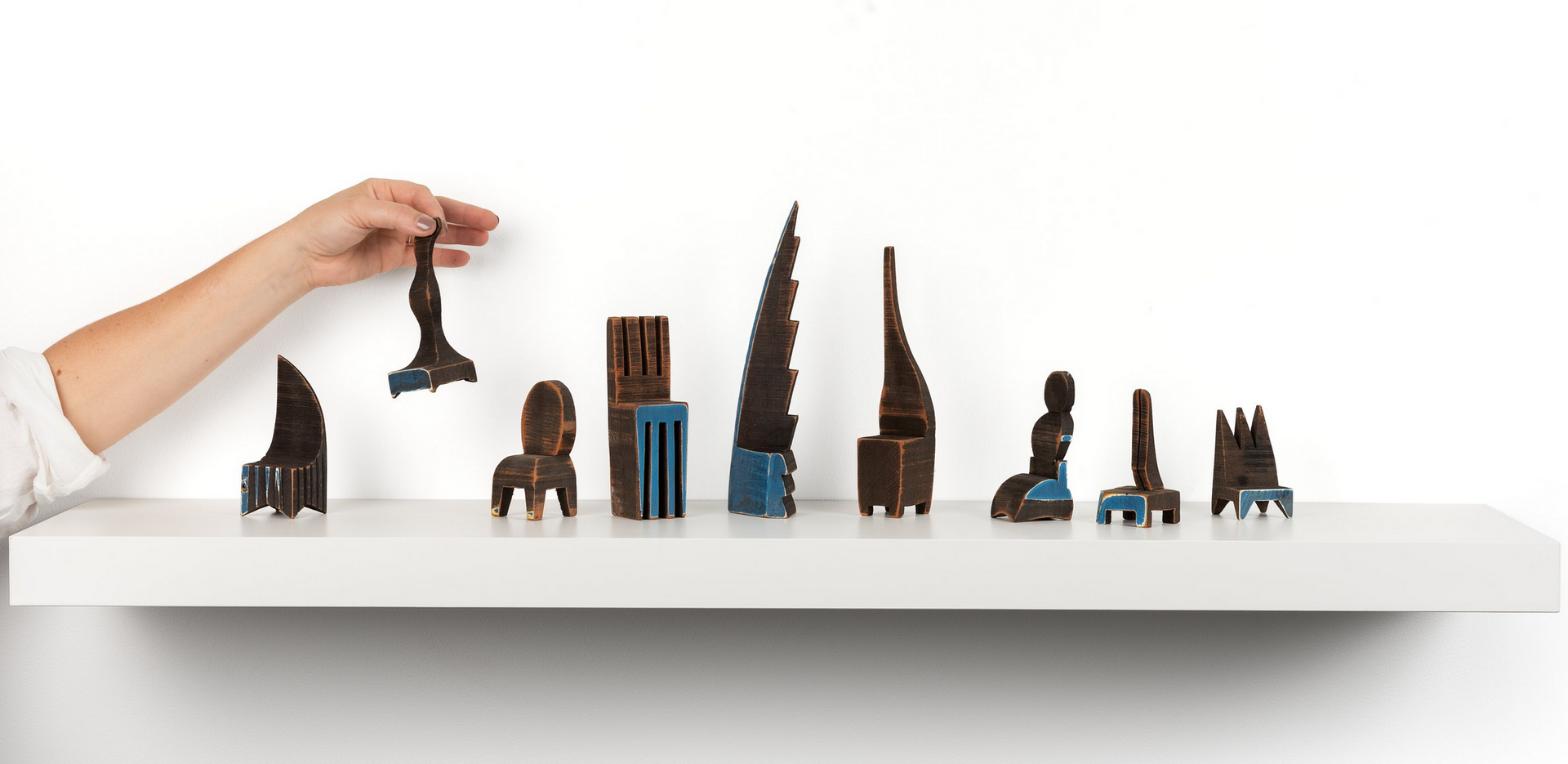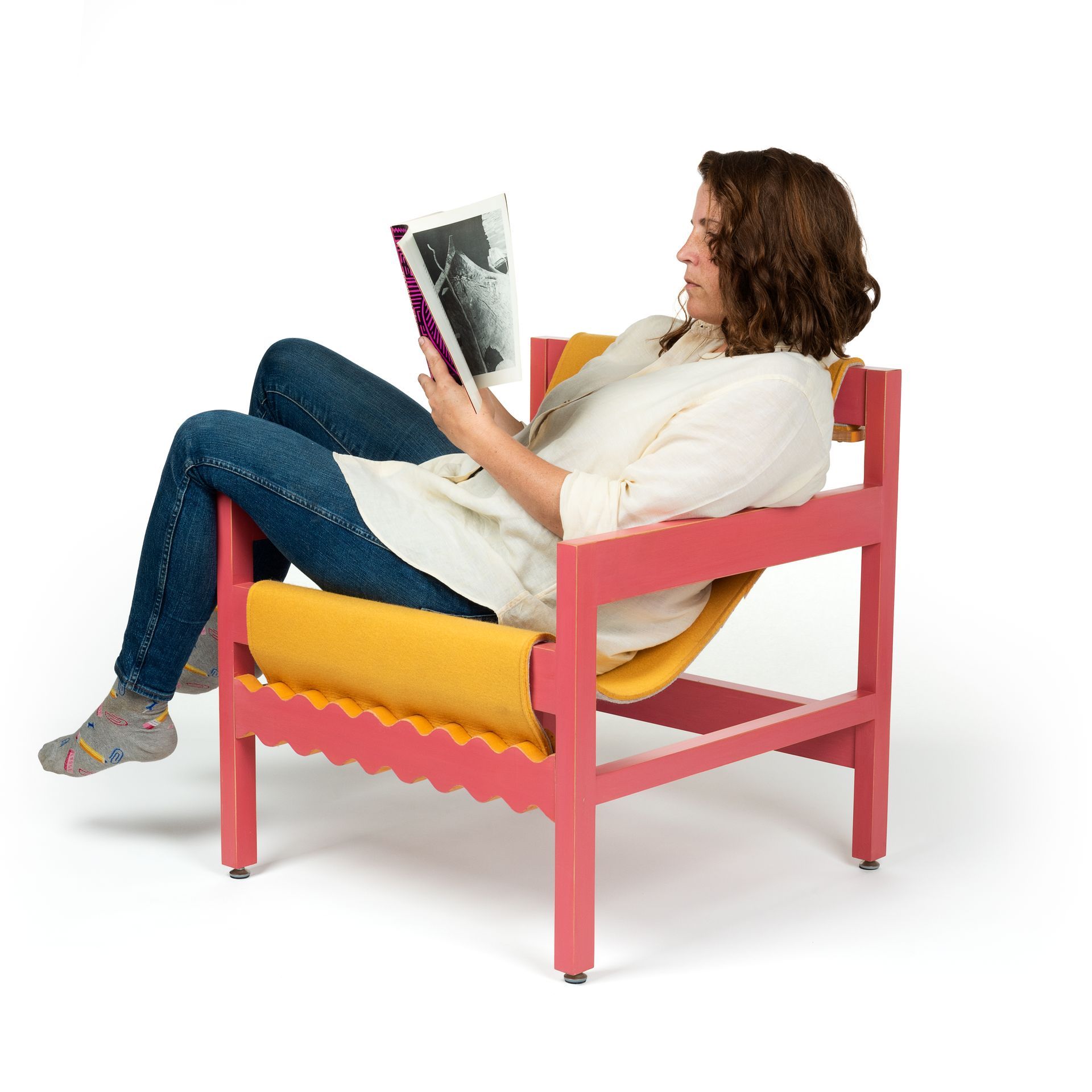Ellie Richards

BIO
Ellie Richards is a furniture designer and sculptor interested in the role the furniture and domestic objects play in creating opportunities for a deeper connection between people and their sense of place. Ellie looks to the tradition of both woodworking and the readymade to create eclectic assemblage, installation, and objects exploring intersections of labor, leisure, community, and culture. She has traveled extensively to investigate the role play and improvisation have on the artistic process. Her work, both furniture and sculpture, has been included in exhibitions at the Mint Museum; Center for Craft, Creativity, and Design; SOFA Chicago; and the Society of Contemporary Craft. Richards was awarded Windgate residencies at the Center for Art in Wood, and in the wood/furniture design programs at San Diego State University and the University of Wisconsin-Madison and most recently finished the three year residency program at Penland School of Craft. Currently she is living and working in Los Angeles, CA.

This is a paragraph. Writing in paragraphs lets visitors find what they are looking for quickly and easily.
This is a paragraph. Writing in paragraphs lets visitors find what they are looking for quickly and easily.
This is a paragraph. Writing in paragraphs lets visitors find what they are looking for quickly and easily.
This is a paragraph. Writing in paragraphs lets visitors find what they are looking for quickly and easily.
This is a paragraph. Writing in paragraphs lets visitors find what they are looking for quickly and easily.
Name Lastname
Title
Name Lastname
Title
Name Lastname
Title
GALLERY
ARTIST STATEMENT
“Chores, playtime, boredom, busyness, work; I use the cultural phenomena behind these topics to provide a familiar way to subvert expectation and establish new ways of perceiving the known, the repetitive, the banal. The specificity of these behaviors and their associative material language carries layered narrative in its historic and sociographic origin, this encyclopedic source serves as a foundation for interpretation. I invest time studying tools and toys from eras present and past; I look closely at domestic spaces, abandoned buildings, construction sites, and the merging grounds where indoor becomes outdoor. I notice cycles of maintenance, the recourse from chaos to order, and the intricacies of the mundane. These observations and experiences serve as an initial prompt in how I communicate new messages through furniture, assemblage, installation, and sculpture, this time, encoded with the psychological intersections of seriousness and spontaneity.
My approach takes the basic opposing forces of seriousness and spontaneity to examine the relationships between found materials intermingles, fabricated forms, and painterly surfaces. Using this malleable cast of characters to magnify the relationship humans have to their personal spaces and surrounding built environments, my own sense of play comes to light. Raw construction sites not yet inhabited by interior decor or defined by function serve as a backdrop to look more closely at the psychology of place making and however thoughtfully or thoughtlessly our environments shift around us.








